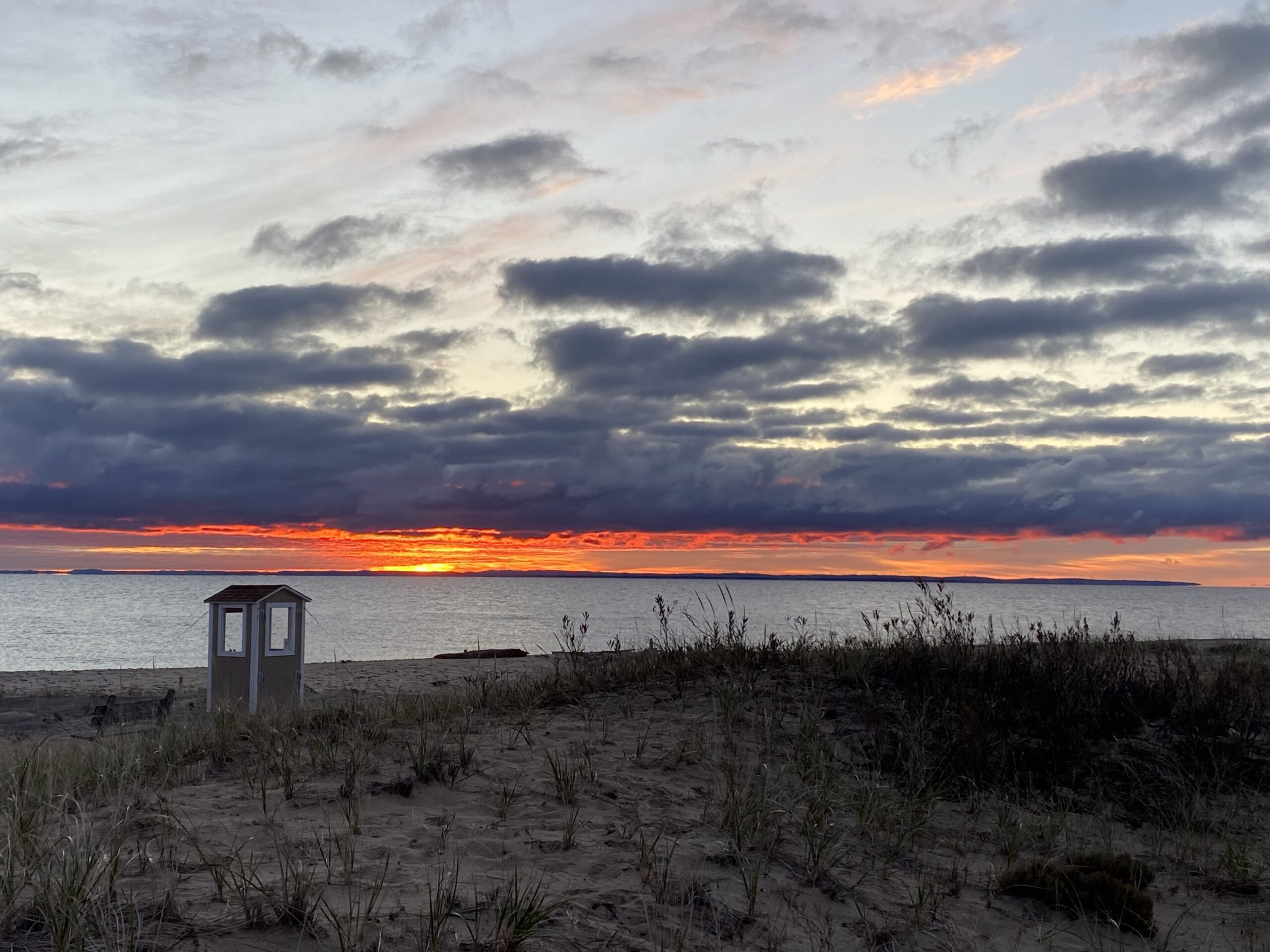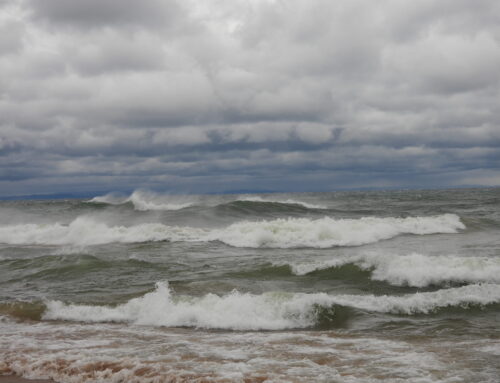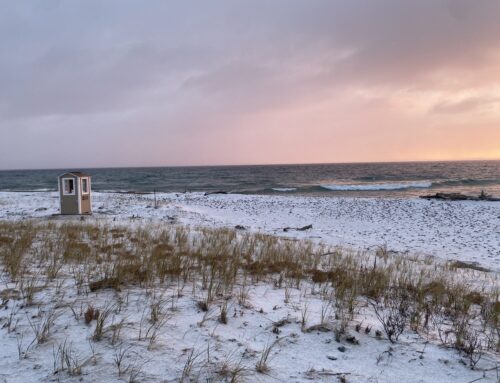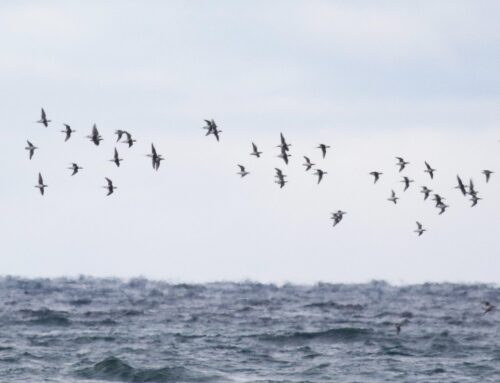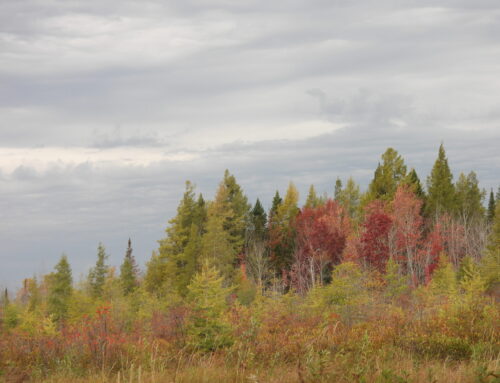A three-day cold front set in at the beginning of the week, producing three fun days of late-season waterbird movement. Each day was a little bit different, but as the winds switched southward towards the end of the week, we were left enjoying large flocks of winter finches and Snow Buntings with fewer waterbirds on the move.
Before this week, we had seen only 400 Long-tailed Ducks the entire season. At the end of the week, our season total sits at more than 13,000 birds! In just a few days, this dramatic pulse of migrating Long-tailed Ducks surged ahead of Red-necked Grebes as our most numerous waterbird of the season. I have to say that Long-tailed Duck flights were a big reason I wanted to spend the fall counting at Whitefish Point. The sight of these shape-shifting flocks of boldly patterned pudgy ducks skirting over the whitecaps is spectacular. They can be a real challenge to count as hundreds of birds pass in and out of the heat shimmer or shuffle around right as I’m almost through the flock. Still, these charming little “sea swallows” kept us busy with a high count of 5,996 on October 22nd. This day’s total is unremarkable by historical Whitefish Point standards, but I hope they keep flying as November approaches.
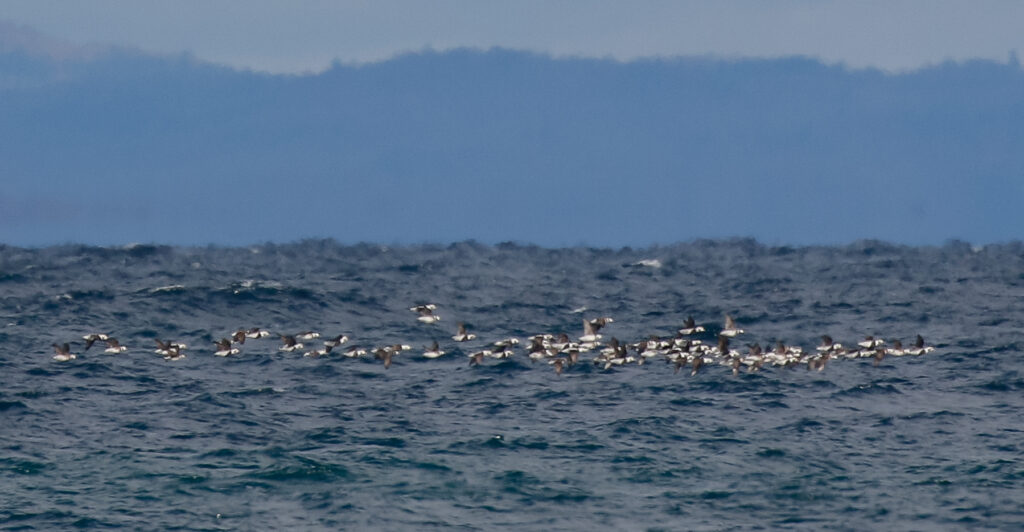
Long-tailed Duck flock. Photo by Skye Haas
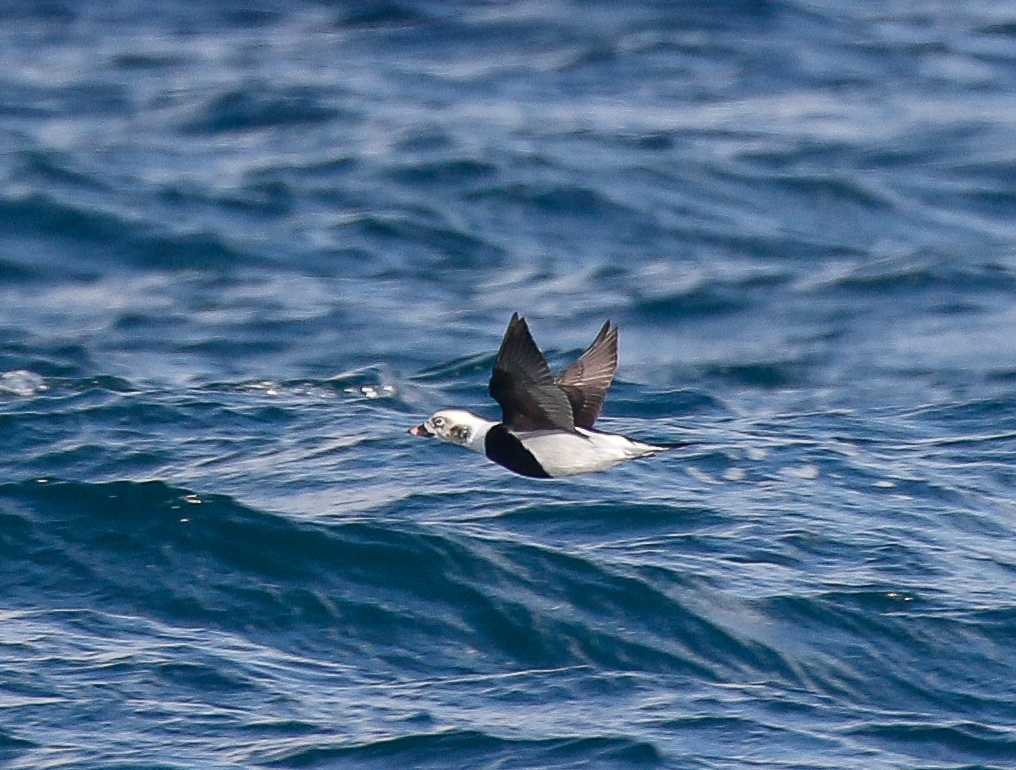
Long-tailed Duck. Photo by Skye Haas
The next two days of Northwest winds on the 23rd and 24th of October had fewer Long-tailed Ducks, but there were plenty of other ducks and unexpected waterbirds to fill in the gaps. Greater Scaup, Red-breasted Merganser, and White-winged Scoter were the most numerous birds accompanying Long-tailed Ducks this week. I mentioned waiting for a big scoter flight in my last blog, but it never materialized, even with the good conditions this week. The scoter total for the week sits at 660 birds (534 White-winged, 70 Surf, and 39 Black). Still a good week of counting, and their window for movement hasn’t closed yet, but we are still short a lot of scoters from the long-term average.
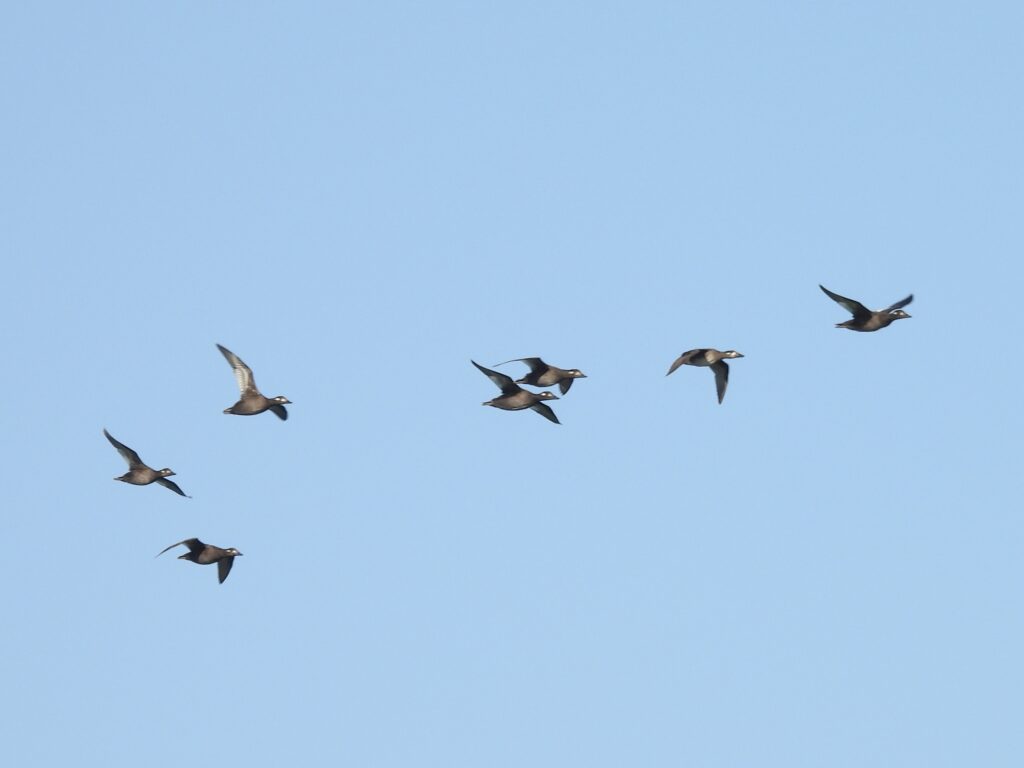
Scoter quiz! Which species do you see? Photo by Frank Fabbro
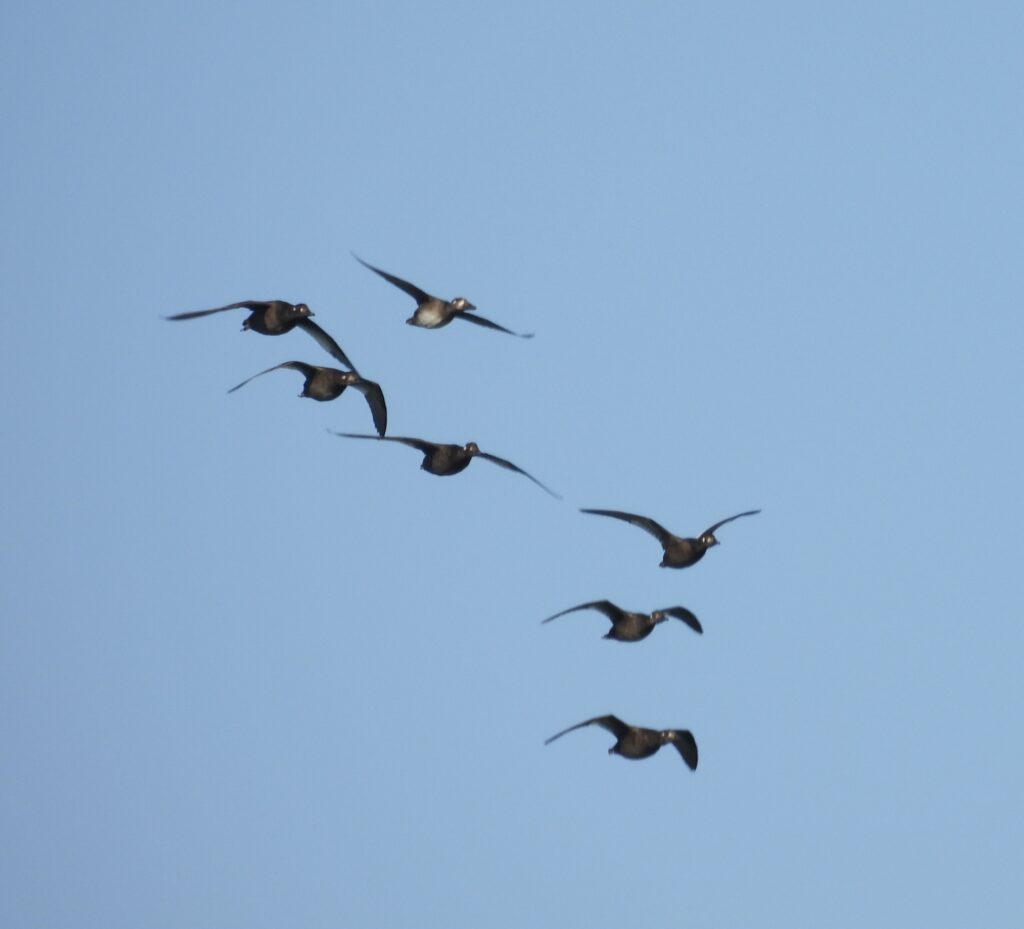
The same scoter flock at a different angle. You can see the different head shape, slimmer body, and different facial markings on the one Surf Scoter mixed with the White-winged Scoters. Photo by Frank Fabbro
A few unexpected waterbirds also flew by the count this week. On the 24th, we had a few different late flocks of Canada Geese fly past, and mixed into one of the groups were three Cackling Geese. That same day, I had my best Sabine’s Gull experience of the season as a sharp-looking juvenile floated right down the beach. To top it all off, a Pacific Loon flew past us that same afternoon. Red-necked Grebes were also on the move with 243 birds marking the first big push in almost a month. Toss in more than three thousand Long-tailed Ducks, and the 24th was one of the most memorable days of the season so far.
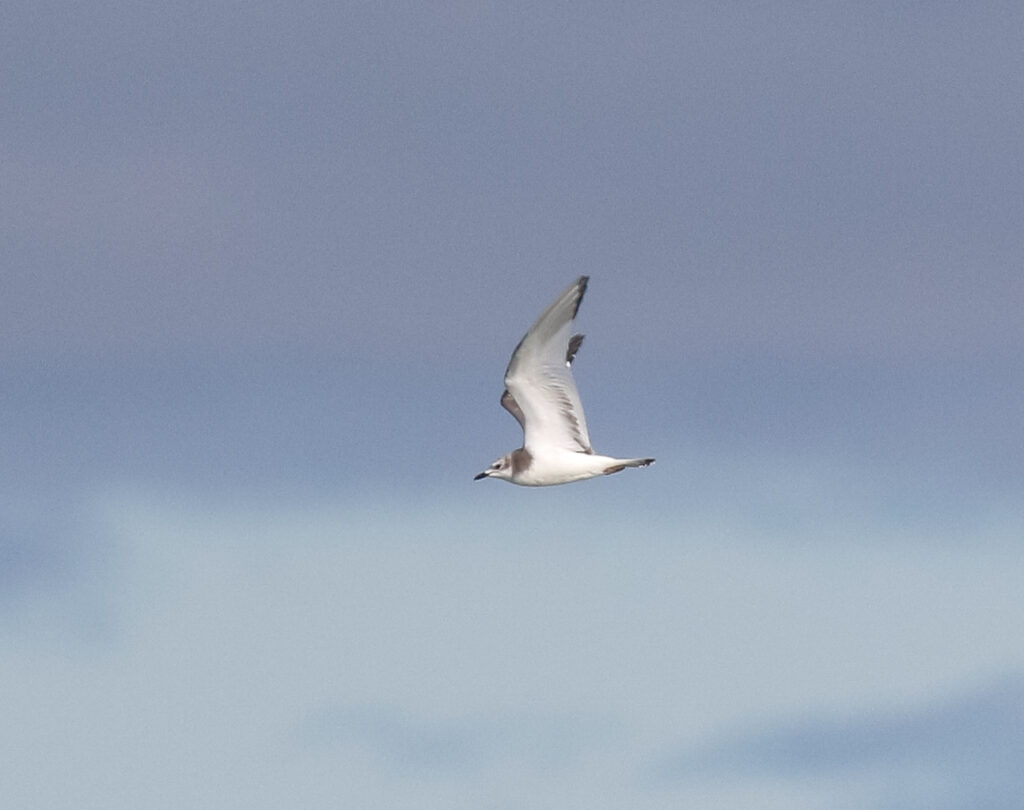
Juvenile Sabine’s Gull. Photo by Skye Haas
While counting on my days off, Clay also had a few unexpected highlights during some otherwise slow Southeast winds. On the 28th, he had both a Harlequin Duck and a juvenile Black-legged Kittiwake fly past, headed to the Northwest. Kittiwakes, like Sabine’s Gulls, are small pelagic gulls recorded infrequently in the Great Lakes. The bold black M pattern stretched across the backs of young birds makes kittiwakes one of the gull species I think are more elegant as youngsters.
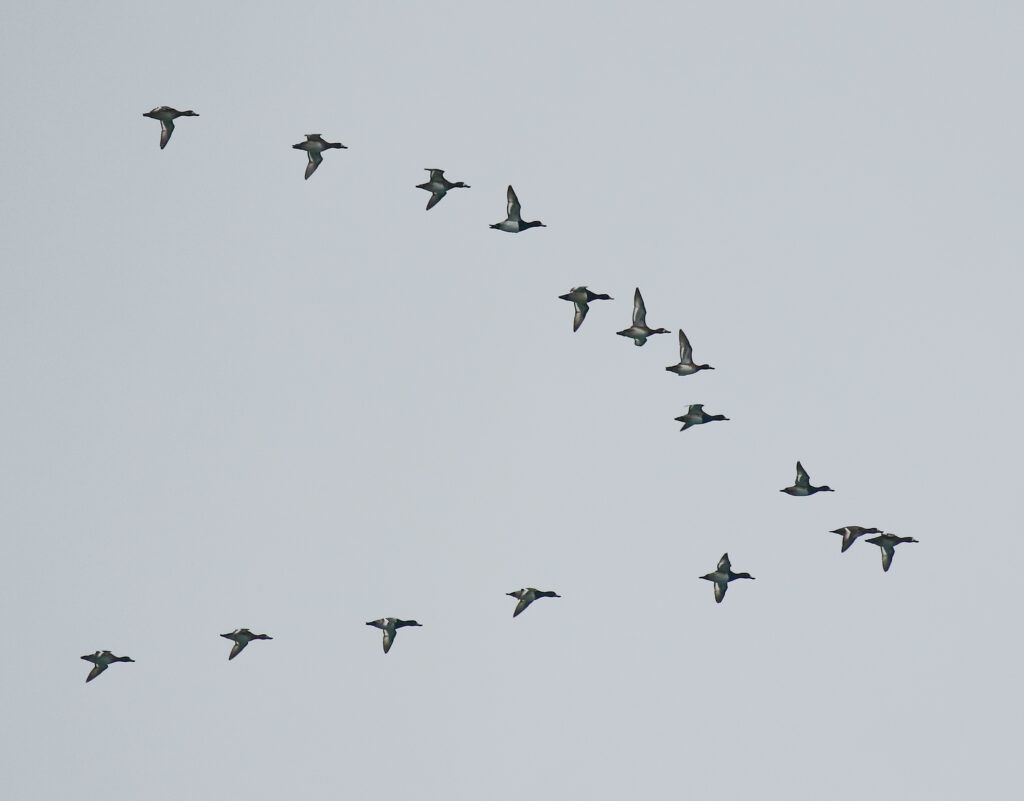
Greater Scaup Flock. Photo by Skye Haas
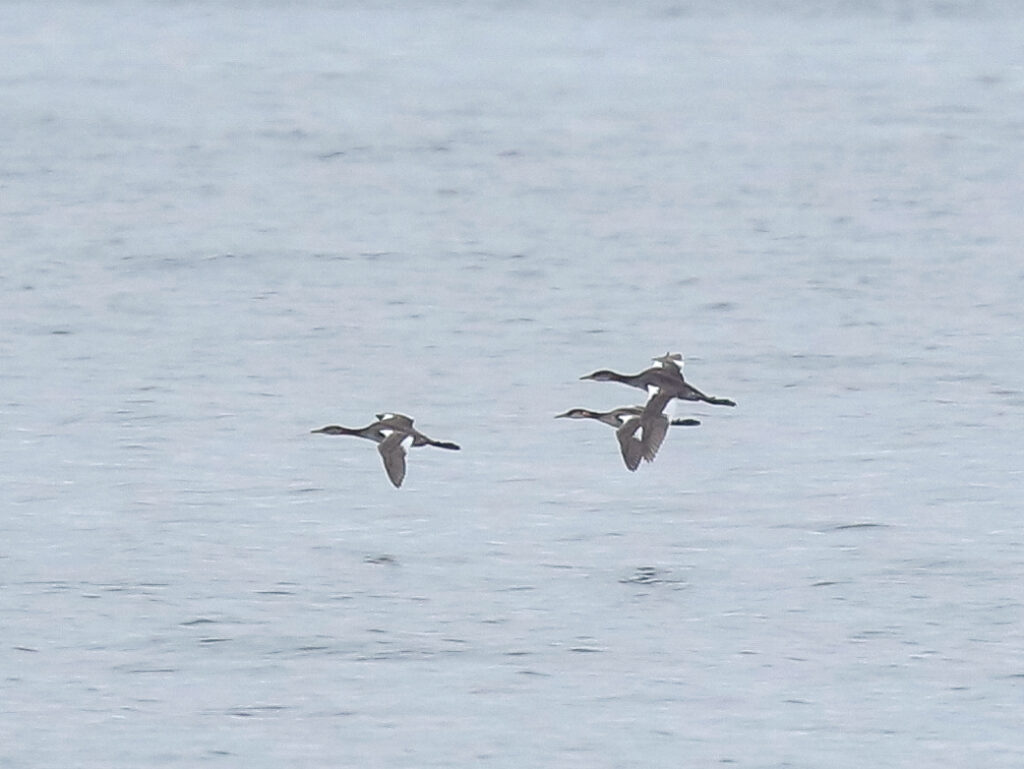
Red-necked Grebes in flight. Photo by Skye Haas
A new raptor has arrived on the scene this week. Different raptors seem to have different tolerances for flying out over the lake. Early in the season, I often saw Northern Harriers and falcons flying over the water, whereas Broad-winged Hawks, Red-tailed Hawks, and Turkey Vultures rarely ventured out over the lake. This week, Rough-legged Hawks have begun trickling past the waterbird count, showing little fear of the lake crossing. As an honorary raptor, I should also mention that the first Northern Shrikes of the season were also seen on the count this week.
In my blog last week, I guessed about the potential for Pacific Loon and Black-legged Kittiwake, and both appeared on the count. Maybe I should set the bar a bit higher. This week, I’m hoping for a Cave Swallow! The forecast calls for more Southeast winds early next week, with another cold front set to roll in around Thursday and Friday to hopefully mix things up a bit.
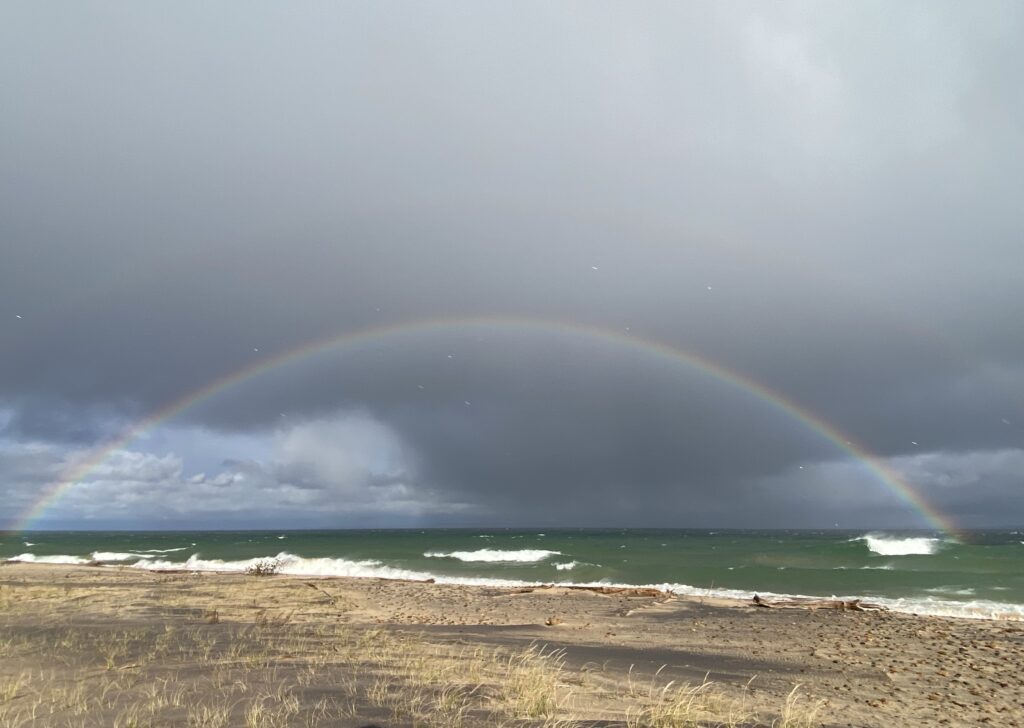
Rainbow in between showers on the 23rd. Photo by Frank Fabbro
~Frank Fabbro, 2025 Fall Waterbird Counter
Featured Photo: Sunrise at the count
You can now see the waterbird count data on Trektellen! Check it out at trektellen.nl/count/view/4209.
You can keep up with the 2025 Fall Waterbird Count by reading Frank’s weekly blog posts and following WPBO’s social media (Facebook, Instagram, and X). The fall waterbird count runs August 15 through November 15.
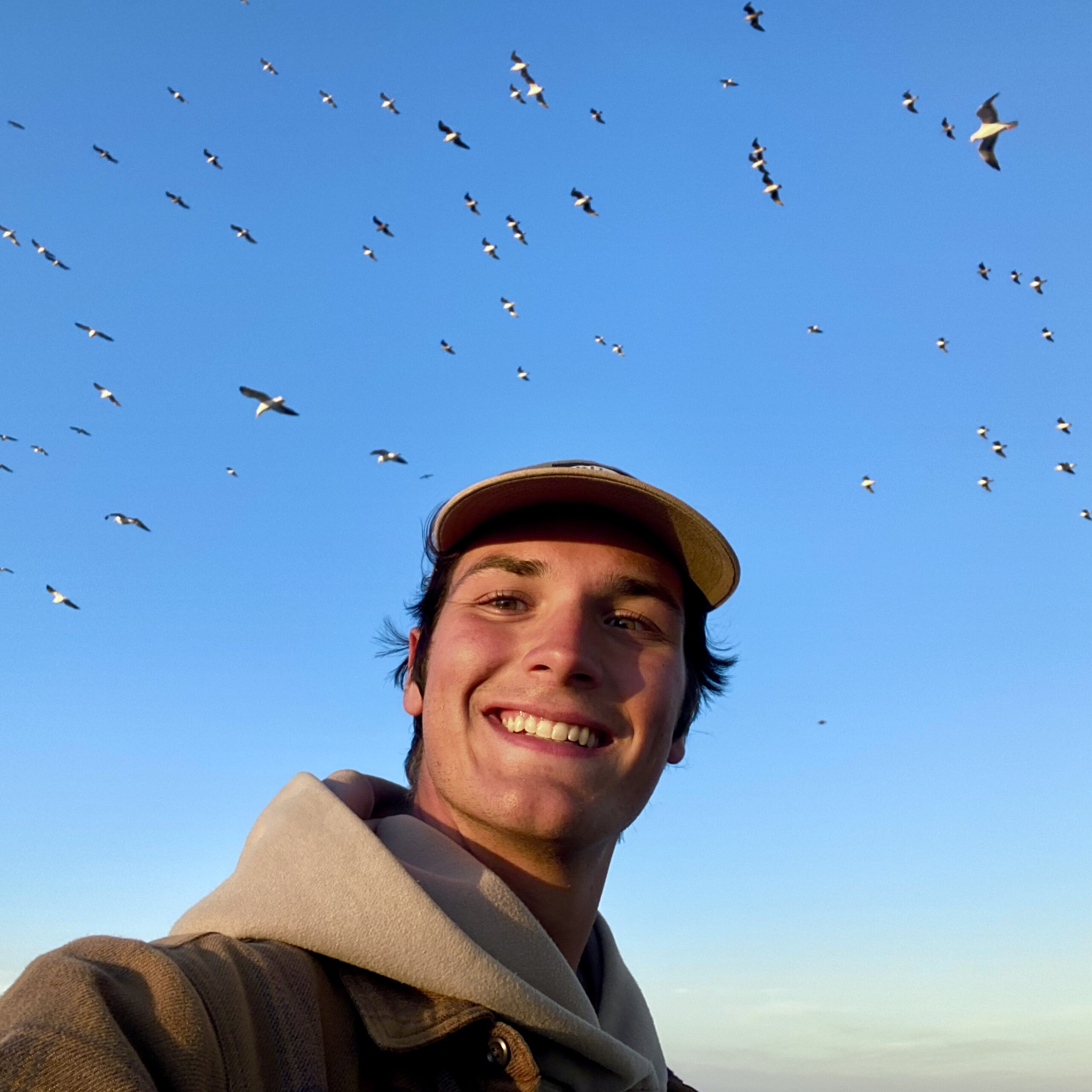
Frank Fabbro: 2025 Fall Waterbird Counter
Frank is an avid birder who was first introduced to the spectacle of bird migration along the Mississippi Flyway in his home state of Minnesota ten years ago. Since then, he has pursued his passion for birds, and the amazing places they inhabit, across the country and around the world. He studied Wildlife Biology and Landscape Restoration at the University of California, Davis, and since graduating has worked on a variety of bird-related projects, ranging from Spotted Owl surveys to prairie-chicken tagging and counting migrating seabirds. He’s excited to be back in the Northwoods, once again experiencing the excitement of fall migration along the shores of Lake Superior.

